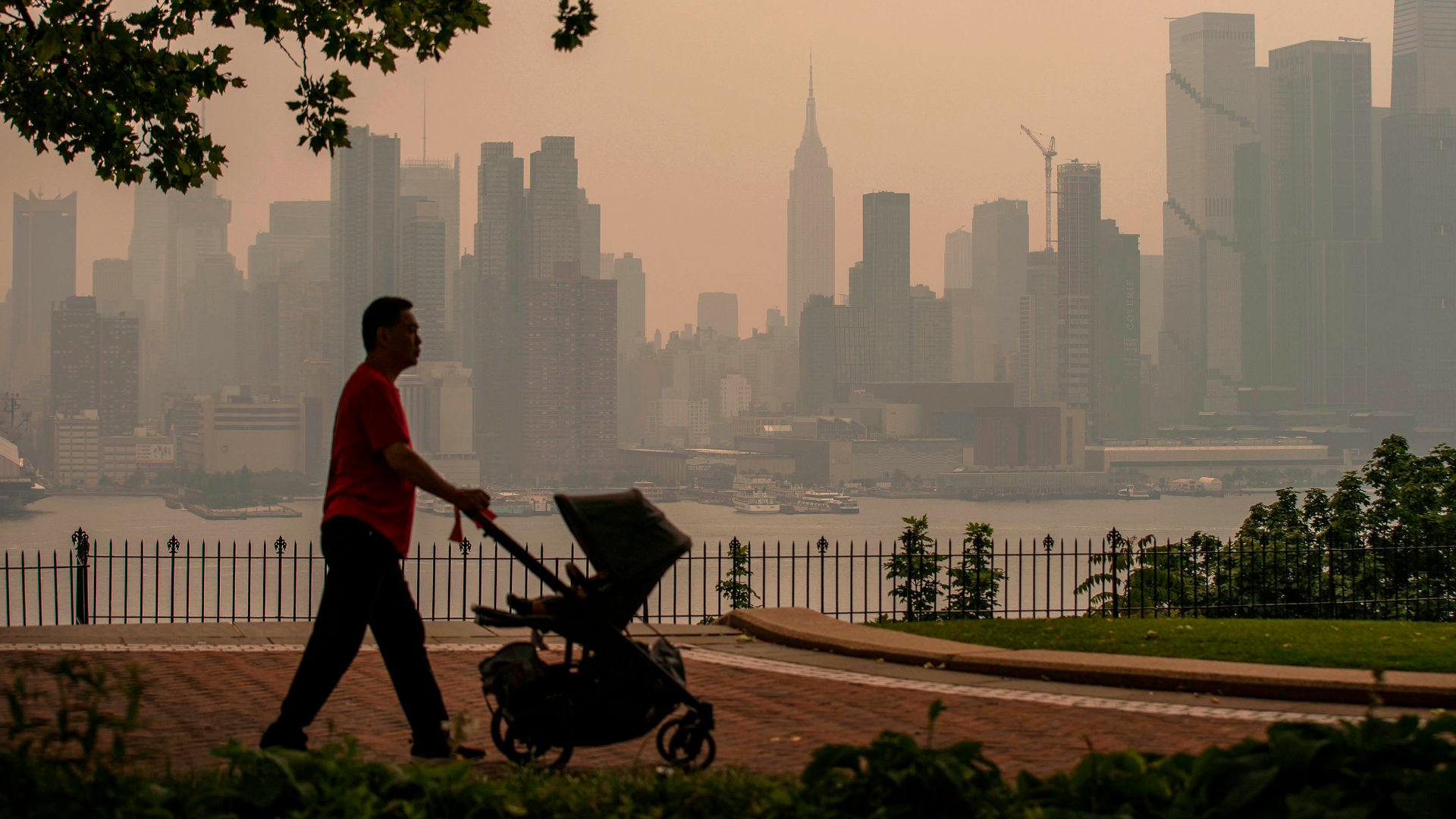Interview: The Lasting Impact of Environmental Factors on Health
Whatever condition a patient might be suffering from today, physician Rosalind J. Wright believes that a long view of the patient’s history, including the environment in which they’ve lived, is vital — especially when the focus is on prevention.
Wright, the Dean for Public Health at the Icahn School of Medicine at Mount Sinai in New York, has seen middle-aged patients with conditions such as chronic lung disease, obesity, cognitive decline, and heart disease — conditions whose roots can be traced back many years, even to conditions prior to birth, during their mother’s pregnancy. “The trajectory is set, often, very early on,” she said. “And it’s really a host of environmental factors acting together and cumulatively.”

Physician Rosalind J. Wright believes that environmental factors, such as exposure to airborne toxins, is vital for understanding chronic disease.
Visual: Courtesy of Mount Sinai Health System
The changes that she’s seen over the course of her career — increases in rates of diabetes, asthma, and other ailments — lead her to believe that environmental factors must play a role. “It became very clear to me, relatively early on in my career, that we’re seeing changes that were happening too fast for it to be genetics,” she said. These observations “pushed me more to think about environmental influences.”
Our interview was conducted over Zoom and has been edited for length and clarity.
Undark: You’ve been in this field for about 30 years — what are some of the trends you’ve noticed over that time?
Rosalind Wright: I’m a pulmonologist by training, so the first things that I became aware of were the rising trends in asthma and the asthma epidemic that folks were talking about early on in my training.
Over the last 25 to 30 years, we’ve seen a rise in asthma rates. And then the disproportionate distribution of who’s at risk for that is interesting, from a public health standpoint. Because you start to see patterns — in this country, it’s lower income communities and communities of color that seem disproportionately burdened by higher rates of asthma, greater severity of disease, greater morbidity.
And then when you start to look at that, you look across other diseases — cardiovascular disease presenting earlier and earlier in life and with greater severity, again with disproportionate burden in similar demographics. And you can say that for almost any chronic disease. Diabetes is an interesting one, because when I went to medical school and started seeing patients in pediatrics you never saw what we call Type 2 diabetes, or what used to be labeled adult-onset diabetes.
Now we see it more and more in younger people, in children, presenting with what we used to call adult-onset Type 2 diabetes. And that’s a shift in the obesity trends in the younger age group — we see greater obesity in kids than we did 20, 30 years ago. And again, it’s disproportionately in lower income and largely communities of color.
Then you start to drill down and say, well, what are what are the different environmental factors that might be distributed differentially across those high-risk communities and groups, and the ones where we see lower rates and less severity and less of these chronic outcomes. And that’s where you start to get interested in the specific — the lower income urban populations, in particular, are impacted by some of the diseases that we’ve been talking about, particularly things like asthma, and diabetes, and obesity.
And, what are the unique exposures they have? A lot of traffic — people live near busy roadways — then you’re going to be exposed to airborne toxins. Also, dilapidated infrastructure in some of those lower income communities. The pipes that deliver our water systems — we all are aware of the recent lead poisoning that occurred in Flint, Michigan, for example. But it’s distributed across our country, and we have to be concerned about that.
UD: What effect does air pollution have on people’s brains?
RW: Living near roadways was identified as a health risk — including cognitive issues and developmental delays in kids — related to neurodevelopmental problems. And [researchers] put that together with “Well, maybe that’s because there’s more pollution from the traffic that’s traveling on those roads,” and people started to look at specific components of air pollution, based on the size of the particles that you might be breathing in.
As the particles get smaller, they can transport through the lung, as you breathe them in, get into the blood system, and then be distributed broadly across the body. And some of those particles, if they’re small enough, can actually cross the blood-brain barrier and have an impact on processes and mechanisms that translate into poor outcomes during development as a child, and then more cognitive decline if you live in a polluted area when you’re older.
You can talk about periods where certain people might be more vulnerable to those air pollution effects on the brain. During fetal development and early childhood, the brain is growing very rapidly. It continues to develop after you’re born, and particularly the first three to five years are a period of rapid growth. So you have more opportunity for toxins to disrupt that optimal growth and put you on a different trajectory, and manifest as cognitive problems, learning disabilities, and neuropsychological problems like greater propensity to go on and develop anxiety disorders, depression. And we know those are big problems in youth, and only increasing.
UD: Wildfires have been in the news recently. What health impacts from wildfires have you seen?
RW: For a number of years now, we’ve heard about the problems that the West Coast has with wildfires. We saw this on the East Coast now, because of wildfires burning in Canada. Actually, New York City, on June 8, 2023, was one of the most polluted cities in the world, with an air quality index that was off the charts: It was greater than 400, which is unheard of. And it looked dark at 2 p.m.
That’s because of the winds bringing the smoke from those wildfires, and in that smoke are multiple components of the air pollutants that we know are toxic — small particles, ultra-fine particles, gaseous pollutants. Those things can cause both acute health issues. We saw in our hospital for example, increased emergency room visits for things like asthma exacerbations, or cardiovascular disorders, more folks having chest pain, angina — and then more serious cardio-respiratory effects. In the long term, your background exposure to air pollution, on top of what you’re already seeing from traffic and other sources, can have longer-term effects.
UD: I understand you’ve been working with a bracelet that can record what pollutants person has been exposed to. What’s the latest on that?
RW: It’s a silicone, flexible, rubber bracelet. You can give it to a participant in a study, or you can send it to their home and ask them to just slip it on and wear it for a number of days. And it just absorbs from the [environment], and you can wear this bracelet 24/7 for a period of time.
Most people wear it five to seven days. And then they can ship it back and we can actually leech out of that a substrate that the labs can put into their analytic machines, then they can actually look at not just one or two or ten or a hundred, but hundreds, and even thousands of different components of what you might have been exposed to in your environment. The bracelets are a nice, non-invasive way to really get a broad brush of what might be going on in your particular environment.
UD: Are certain populations more vulnerable to airborne toxins than others? What has your research revealed about those differences?
RW: Certain populations do look to be more vulnerable to toxic effects of air pollution on many systems, including the brain. And these include the unborn child, due to exposures that the mother has, which can have impacts on the development of the brain during fetal life, given that they’re more rapidly developing at the time, so there’s more opportunity for disruption of that normal development, from the toxins, as well as having less mature defense mechanisms in place, like certain enzyme systems that protect you from intake of air pollutions and toxins that might have oxidative stress effects or enhance inflammatory effects.
Not only during fetal life, but early childhood, the zero to five-year age range, are particularly vulnerable. We know this from our research on brain development when we’re looking at air pollution effects. It happens at different transitions where physiology is rapidly changing, like puberty, like menopause, like pregnant women.
Pregnancy, in and of itself, is a different state for that woman. Her physiology has to change to tolerate and nourish the developing baby, and there’s lots of changes that take place there. Her hormone levels change, depending on whether she’s carrying a boy or girl, et cetera. Her immune system changes. All of those things make pregnant women more vulnerable to the toxic effects of air pollution potentially as well.
And we also see vulnerability based on your socioeconomic status, where you live, and your racial-ethnic background — because socioeconomic status, where you live, and race or ethnicity in this country are intertwined.
So it just so happens that in lower-income neighborhoods, you likely have more people of color. Some of that is due to historical policies, like redlining and disinvestment in certain populations. These were focused on neighborhoods of color, and they’re still living that. And because of that, they’re more disproportionately exposed, not just to the air pollution, but other toxins that shift their underlying biology and physiology.










